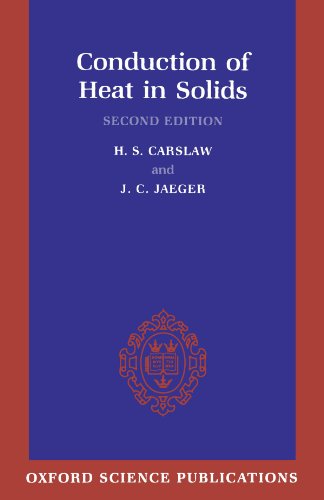Conduction of Heat in Solids epub
Par hudson david le jeudi, janvier 21 2016, 03:02 - Lien permanent
Conduction of Heat in Solids by H. S. Carslaw, J. C. Jaeger


Conduction of Heat in Solids book
Conduction of Heat in Solids H. S. Carslaw, J. C. Jaeger ebook
Page: 517
Format: djvu
ISBN: 0198533683, 9780198533689
Publisher: Oxford University Press, USA
Their best method is conduction. Heat can be transferred from one place to another by three different methods, namely Conduction, Convection and radiation. Thermal energy moves in three different ways: by conduction, convection and radiation. Conduction: Heat is disorderly kinetic energy of molecules and/or vibration of molecules depending on if the matter is solid liquid or gas. More energetic molecules in a hot substance collide with less energetic molecules in a colder substance, transferring energy and therefore heat. For example, if one end of a metal rod is heated up, the heat will gradually travel to the other end until the entire rod becomes hot. In solids, this transfer is called conduction. Jaeger: Conduction of Heat in Solids (Oxford University Press, Oxford, 1959) p. From this conduction, including gravity, convection is formed. The concept of air sealing ties in with how insulation works and how heat moves. Thermal conduction exists in solids, liquids and gasses.